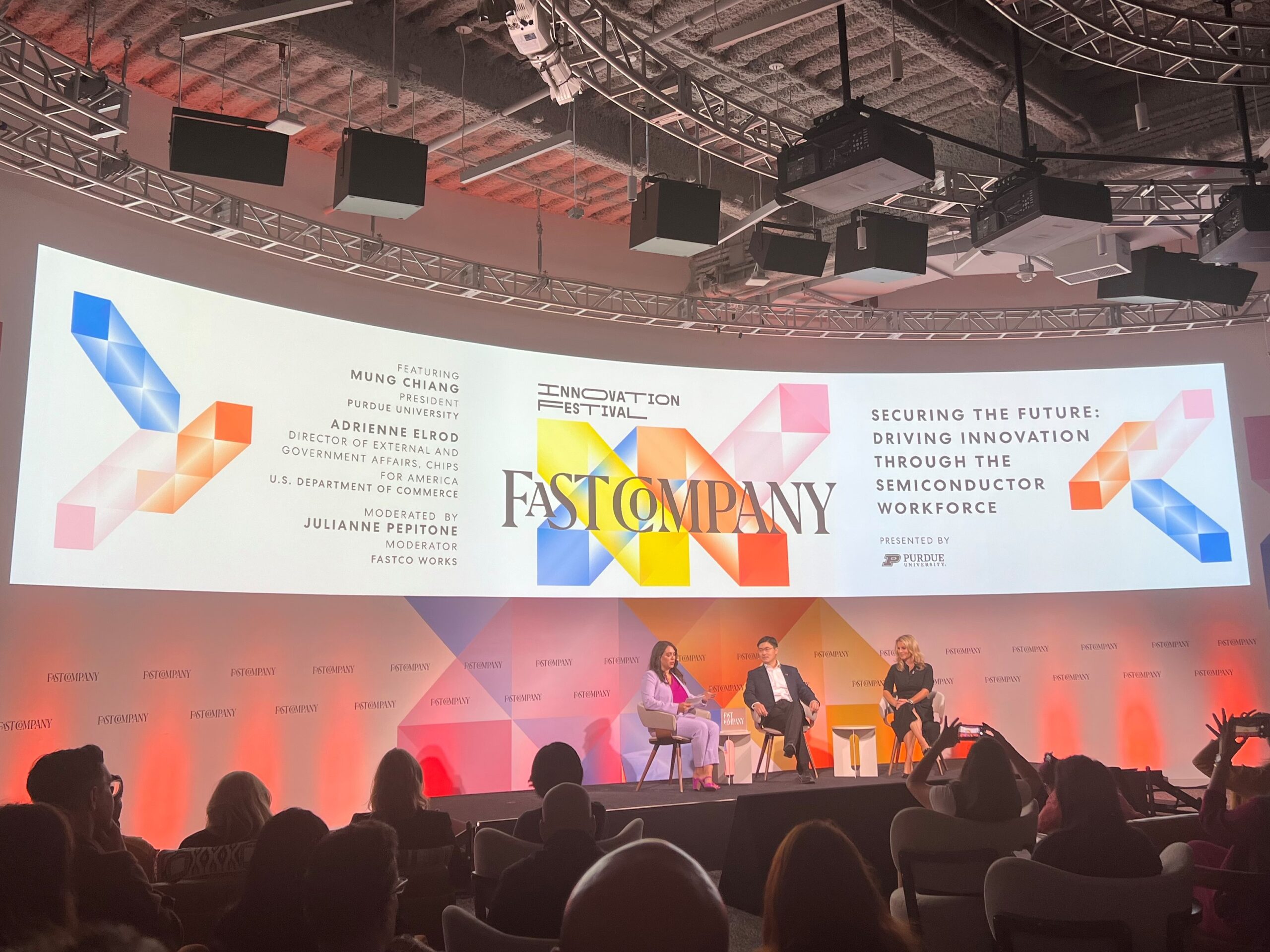Five Takeaways from Fast Company’s 9th Annual Innovation Festival
As events continue to stage their post-pandemic comeback tour, the question we often get is “did it truly bounce back?” In the case of Fast Company’s Innovation Festival, the answer is an unequivocal “yes.”
In its second year since the pandemic, this year’s festival boasted an “Innovation Everywhere” theme and lived up to it by attracting leaders and brands from every industry. As a theme, “Innovation Everywhere” was quite broad but quickly became a lesson in why not to judge a conference by its cover. What unfolded over three days’ worth of sessions was a desire to understand how brands and peers are experimenting and concepting, even if the results are imperfect or incomplete. This type of conversation created an “in it together” atmosphere and safe space for brands to show a more vulnerable side. Innovation doesn’t necessarily mean perfection. It is a process.
1. Real loyalty comes from raw, unfiltered access
Consumers easily detect when something is overly structured and want next-level transparency in today’s highly connected world. That’s why companies like Roblox to Hill House Home spoke to creating spaces for consumers to prototype and experience products and platforms in unfinished states. Roblox and Invisible Universe users can create their own AI avatars or digital worlds in real-time, while Hill House Home uses Instagram streaming to gauge interest of upcoming launches. If your audiences can shape their own experiences, feel important, and see themselves reflected, it will help to deepen relationships with fans.
2. when it comes to ai, sharing is caring
AI has sparked intense competition, however, this is where the “in it together” theme played out strongest. IBM, Capital One, and Pentagram encouraged starting small projects with AI to learn from mistakes. Then, to the extent that it makes good business sense, be open about what was learned. However, no one advocated for experimentation for the sake of experimentation. Panelists unanimously agreed that AI projects should always be aligned to the business objectives. And Prem Natarajan, Chief Scientist at Capital One shared, “thoughtfulness needs to be present in every step of the process and workflow”, to emphasize responsibility above all else.
3. Invest in the human first, not the technology
Much has been said about how AI will reshape the future, but leaders from IBM and IDEO were keen to flip the conversation from a focus on new technologies and applications to the needs of people. For example, IBM’s Rohit Badlaney spoke to the importance of education and investment to ensure employees can learn how to use AI to pursue higher-value work. Meanwhile, IDEO’s Wesley Eugene questioned why no one uses AI for human rights issues like social justice, stating, “technology is a mirror of us – if we want better AI, be better humans.” Point is, in our race to invest in and build better technologies, are we building better humans?
4. From mass missions to micro missions
Unpacking the meaning of brand mission is a constant at the Innovation Festival. However, what separated this year’s discussion was a focus on micro missions that deliver big impact to fewer people, dismantling biases in markets and creating experiences that cater to the marginalized. Adobe Design discussed expanding their definition of disabilities to provide more tailored user experiences and Tracee Ellis Ross’ brand Pattern addresses the frustration of lack of available products for black and curly-haired customers – such as developing hair dryers specifically designed for curls and even redesigning the bottle to ensure her products can continue to deliver greater volume while still occupying highly visible shelf space.
5. Sustainability can start small
The theme of experimentation continued to play out through sustainability as well, as companies like Pandora and Scale AI spoke to the importance of achieving big change by starting small. Dell Technologies’ solar community hubs have now expanded to remote communities in the Amazon, and Pandora’s affordable lab grown diamonds are pushing for more sustainability across the broader luxury industry. On driving sustainable innovation, Dell’s Carly Tatum emphasized, “There’s naysayers in every company. But then there are the ones that are curious and they’re interested and they’re bold.” For brands feeling pressure to fix it all and show receipts, progress, no matter how small, can earn you permission to have a voice and inspire others.
This year’s festival illustrated the center of innovation starts with collaboration, humanity, and vulnerability. Don’t be afraid to share your experiments, findings, and challenges – we’re all learning as we go. Be the most open and honest you’ve ever been with your audiences to take relationships to the next level. And instead of being broad in your brand’ mission, hone in on what matters most to your brand’s ethos and solve for exclusion. To make strides in our industries, we must acknowledge that we’re all in it together. Start small to go big.
